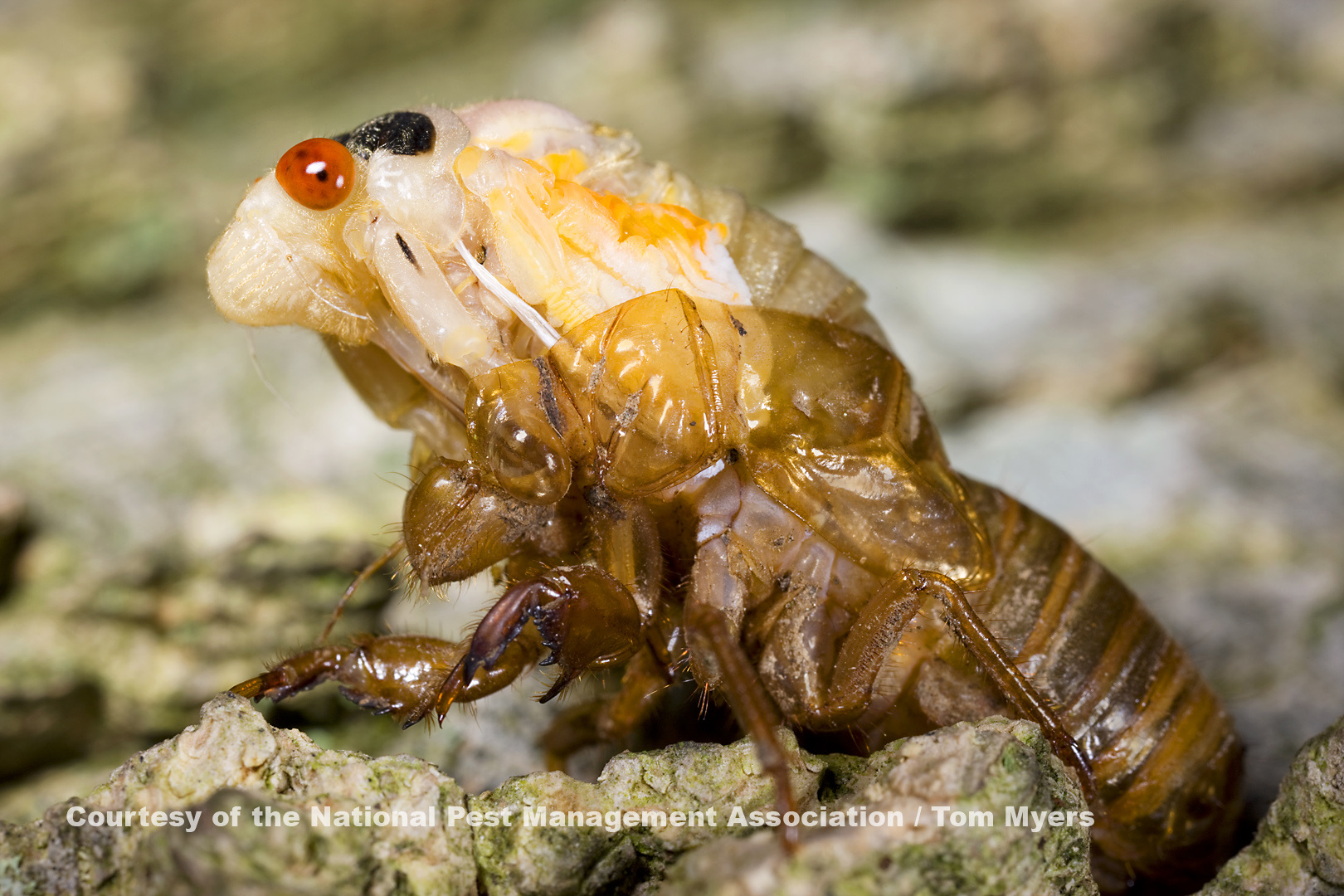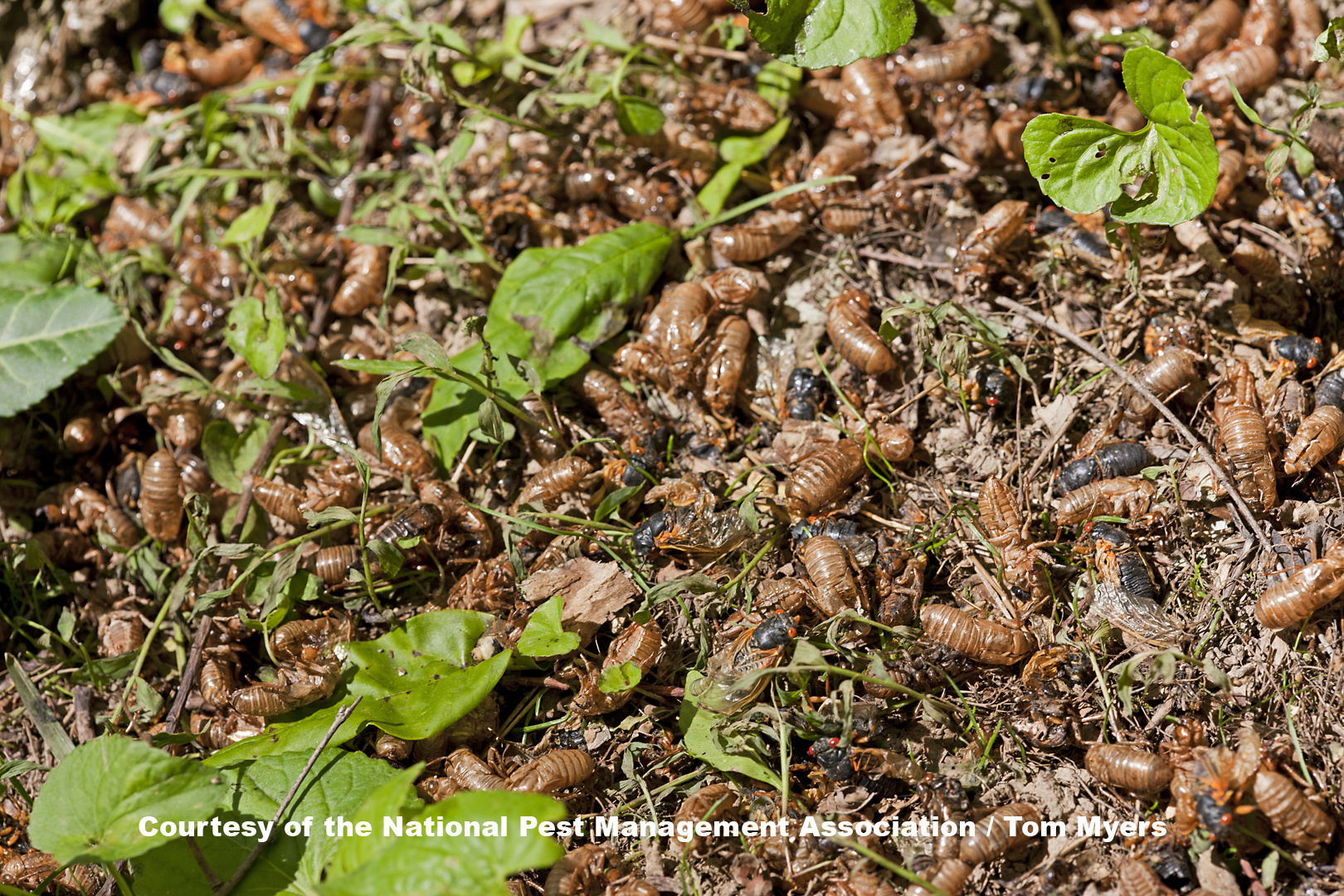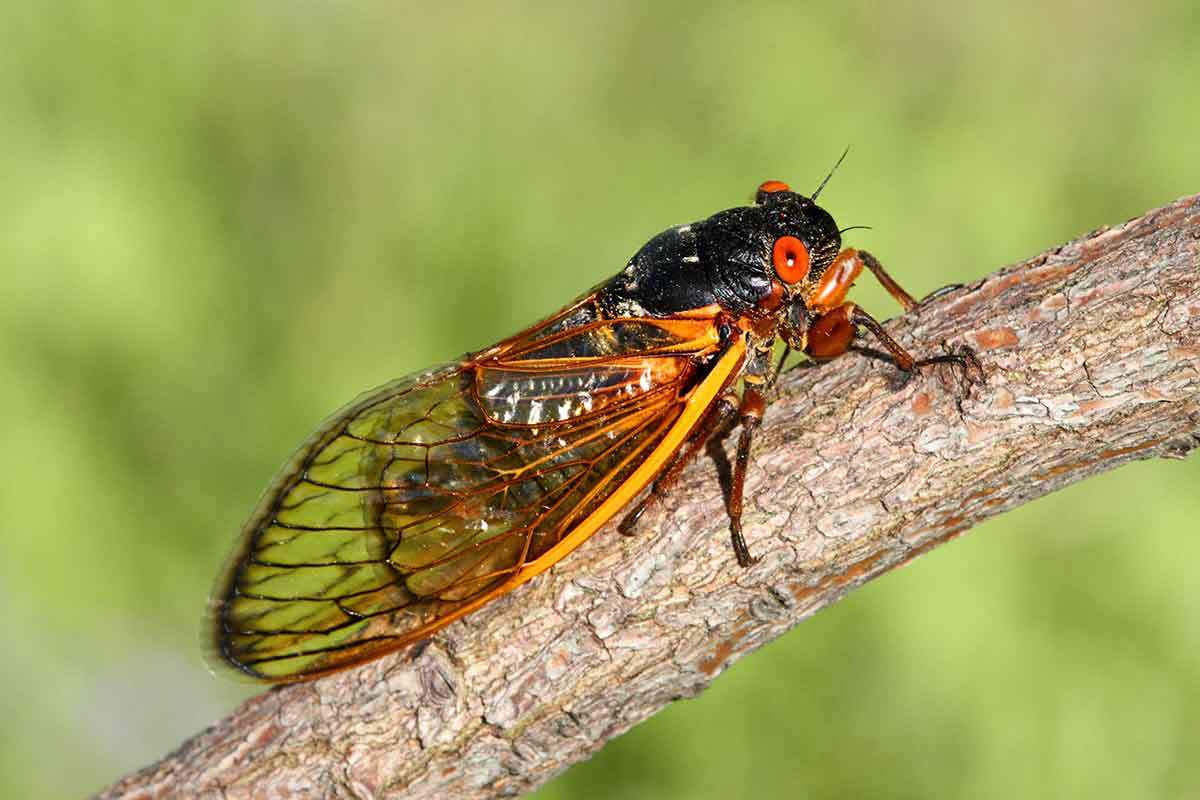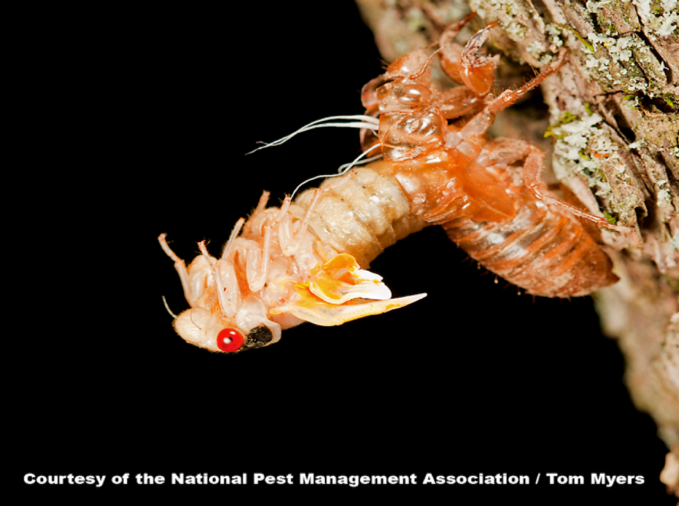Periodical Cicadas Magicicada

Periodical Cicada Identification
Color: Black bodies, striking red eyes and orange wing veins
Size: Range from ¾ in. up to 2 ¼ in.
Legs: 6
Antennae: Yes
Shape: Large, winged
Region: Northeastern United States
What is a periodical cicada?
Periodical cicadas, sometimes referred to as 17-year cicadas, are large, flying insects that are known for the loud buzzing noise that males make to attract female mates. These insects are often incorrectly referred to as locusts, even though they are unrelated. While annual cicadas emerge every year, periodical cicadas appear at either 13- or 17-year intervals.
What do periodical cicadas look like?
Periodical cicadas are easily identifiable by their striking black bodies, red eyes and orange wing veins. They have antennae, six legs, and can range in size from 1 to 2 inches long. Periodical cicadas should not be confused with annual cicadas, which are black and green and emerge every year.
Cicadas do not bite or sting, generally posing no health threats to humans.
The majority of a 17-year cicada’s life is spent developing in an underground habitat. During this time, they feed on the juices of tree roots. After 13 or 17 years, periodical cicadas emerge from the soil when the temperature eight inches below the surface reaches 64 degrees. Once above ground, the adults may feed on plant juices with minimal damage from feeding; although, damage may occur from the female jabbing plants with a saw-like apparatus to lay eggs into trees or shrubs.
After emerging from underground, periodical cicadas will remain above ground for about a month, during which time they will molt in leaves, copulate, and lay eggs in slits the females cut on the ends of small tree branches. Each female cicada can lay between 400 and 600 eggs, meaning populations can be enormous. The adults die off while the cicada offspring fall to the ground and burrow into the soil, until they re-emerge 13-17 years later.
Periodical cicadas are least active at nighttime when they are most likely up in the trees, and early in the morning when the temperature is cooler. They are strong yet clumsy fliers, occasionally flying into objects that cross their paths. As a result, it is common for cicadas to unknowingly fly into homes if residents leave doors or windows open. Periodical cicadas are unable to breed indoors, so infestations in houses are not likely.
Even though they appear in strong numbers, periodical cicadas are only considered nuisance pests. They do not bite or sting, and generally do not pose any health threats to humans. In general, the majority of complaints related to periodical cicadas are in relation to their noisy behavior, as well as their skin shedding. Cicadas are known as the loudest insect in the U.S., as their “singing” can be heard for up to ½ mile away. Additionally, 17-year cicadas can cause damage to young trees.
Periodical cicadas are hard to miss, as they typically appear in the hundreds or thousands per acre.
The emergence of periodical cicadas is one of the grand spectacles in all of nature and can be educational and enjoyable. But, if you are looking for cicada-relief during an emergence, the best way to avoid contact is to limit time spent outdoors during the daytime hours when they are most active.
To prevent periodical cicada damage to young trees, cover tree saplings with netting or cheesecloth. Netting should have a mesh of no less than 1/4 inch and should be placed over the trees when the first male songs are heard. The netting should be tied to the trunk beneath the lower branches and can be removed after adult cicada activity has ended.
If you have a bigger problem with cicadas, contact a licensed pest control professional. You can find one near you with the helpful zip code search below.






